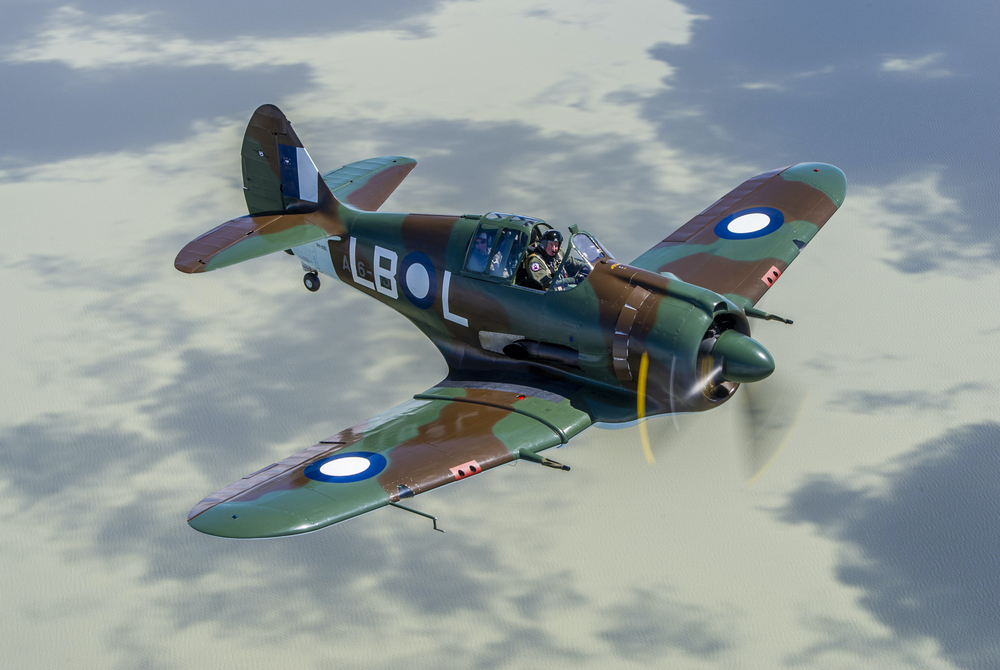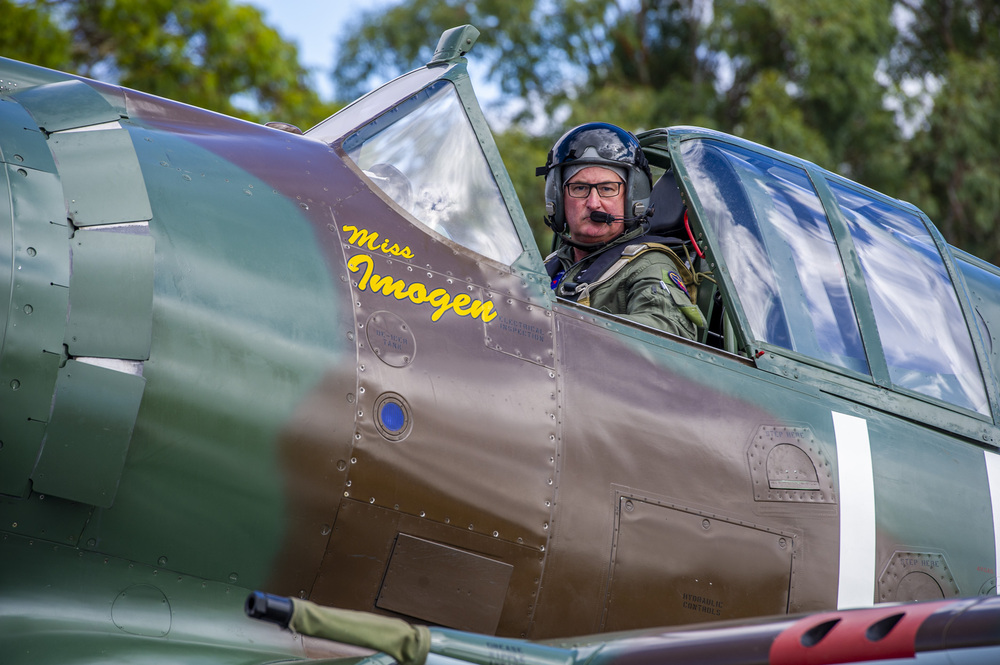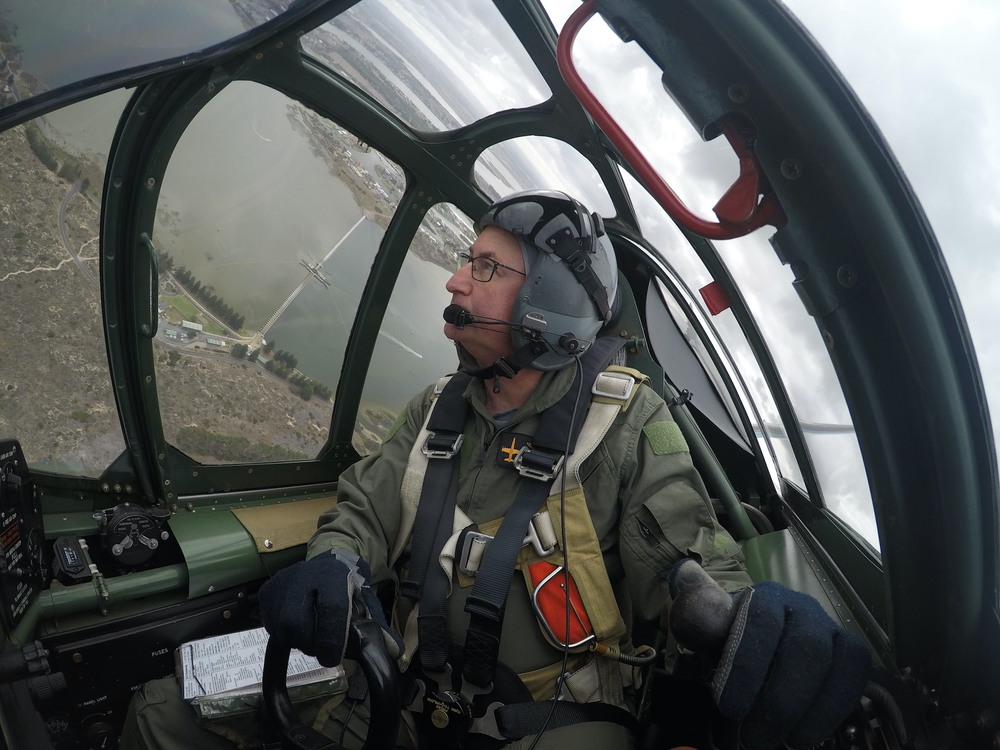Bringing back Australia’s aviation history
Staff Reporters
18 May 2024, 8:30 PM
 Jim Whalley AO, flying his Boomerang. Photo Credit: Mike Annese Photography
Jim Whalley AO, flying his Boomerang. Photo Credit: Mike Annese PhotographySPOTLIGHT STORY
Words: Anna Kantilaftas. Photos: Mike Annese Photography
In the quiet shadows of history, the resurrection of a CAC Boomerang emerges as a tale of restoration, family legacy, and a nation's unwavering commitment to preserving its aviation heritage.
Jim Whalley AO is a former Air Force fighter pilot turned entrepreneur, whose journey took an unexpected turn when he embarked on a mission to revive a CAC Boomerang fighter plane.
Unlike other aircraft in his restoration collection, Jim's bond with the Boomerang has a familial connection. His father, a World War II fighter pilot, links the two generations through a twist of fate.
“I bought a Boomerang project that was around 70 per cent complete. As I was talking to Matt Denning (the restorer), about my dad’s aircraft and its serial number, he told me he knew where a lot of that wreckage was and offered to swap the parts of the new project with my dad’s aircraft,” Jim says.

“So the CAC Boomerang I have is only about 20 or 30 percent of the original aircraft, but it’s nice to have that family connection.”
The Boomerang's tale begins amidst the chaos of World War II, where it emerged as Australia's quick answer to the challenges of aerial combat. Designed and built in Australia between 1942 and 1945, it represented hope—and a necessity—in a time of uncertainty.
“Australia's only designed and built fighter aircraft that ever saw combat was the CAC Boomerang. It flew extensively against the Japanese and through New Guinea in World War II. But it wasn’t the greatest fighter in the world,” Jim says.
“Australia ended up receiving Kittyhawks [from the US], so the Boomerang was used for, and very good as an Army Cooperation aircraft, which we now refer to as a Close Air Support aircraft.
“It would support troops on the ground and was heavily armed with cannons and machine guns. It was very tough, but it’s not necessarily a nice plane to fly; it tried to kill my father three times and it’s tried to kill me three times as well.”
For Jim, the Boomerang offered opportunity to breathe new life into a relic with a connection to his personal history. With a team of skilled engineers, he worked to restore the plane and give it a second life.
“I was born in 1966 when dad was 46,” Jim says. “Unfortunately, he died of cancer when I was nine years old, but since I could speak, all I wanted to do was be an Air Force pilot, which is largely due to dad’s influence. My godfather, who flew with my dad, also took on that fatherly role, so I always had that connection with the military and Air Force.”
Jim says he pieced together the story of what happened to the CAC Boomerang his dad flew during the war.

As his father was taking off on patrol of Merauke in New Guinea, he had some serious engine problems and turned around and came back to land the plane. When the commanding officer questioned the return, he jumped in the plane to check what was going on and realised it wasn’t operating properly. A flight sergeant was ordered to fly the plane to the west coast of Cape York Peninsula where they had a repair station, but the engine failed halfway and the plane was landed on a beach. There were no fatalities from the crash landing.
“The wreckage sat there for a while,” Jim says, “Until they finally went and recovered most of it and used it for spare parts. Thankfully, there was enough left to put my plane together.”
The restoration process was no easy feat, requiring a delicate balance of technical expertise and historical reverence over almost a decade.
“It took an unspecified amount of money and about seven years. It was a lot of work on the part of the engineer. I’m the test pilot - I’m good at breaking things, but not at putting them back together,” Jim says.
He says it was more than just his family ties that drew him to the CAC Boomerang, which he believes is a representation of Australia‘s achievements in innovation.
“It’s sad that Australia seems to have lost its technological edge. We once did some pretty cool things in engineering and technology.”
“The Boomerang sort of represents what Australia used to be able to do, what it was capable of in terms of technology when it set its mind to it. And I think whilst it wasn't the greatest fighter in the world, it was a pretty impressive effort to get it built in five months. And without that sort of know-how we could have been in deep trouble back in the 1940s.”
The restored Boomerang, now proudly residing on Jim’s Goolwa property, may not have been the best in battle, but today, it carries with it the echoes of a time when Australia's aviation prowess reached for the sky.
In the narrative of vintage aircraft, Jim's CAC Boomerang is another living chapter that serves as a reminder of a nation's ability to soar above its challenges.

Story kindly funded through LINA (Local Independent News Association)